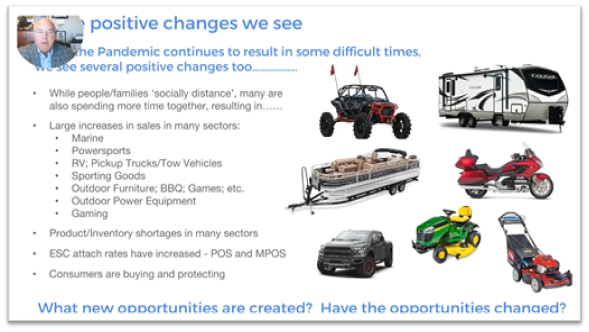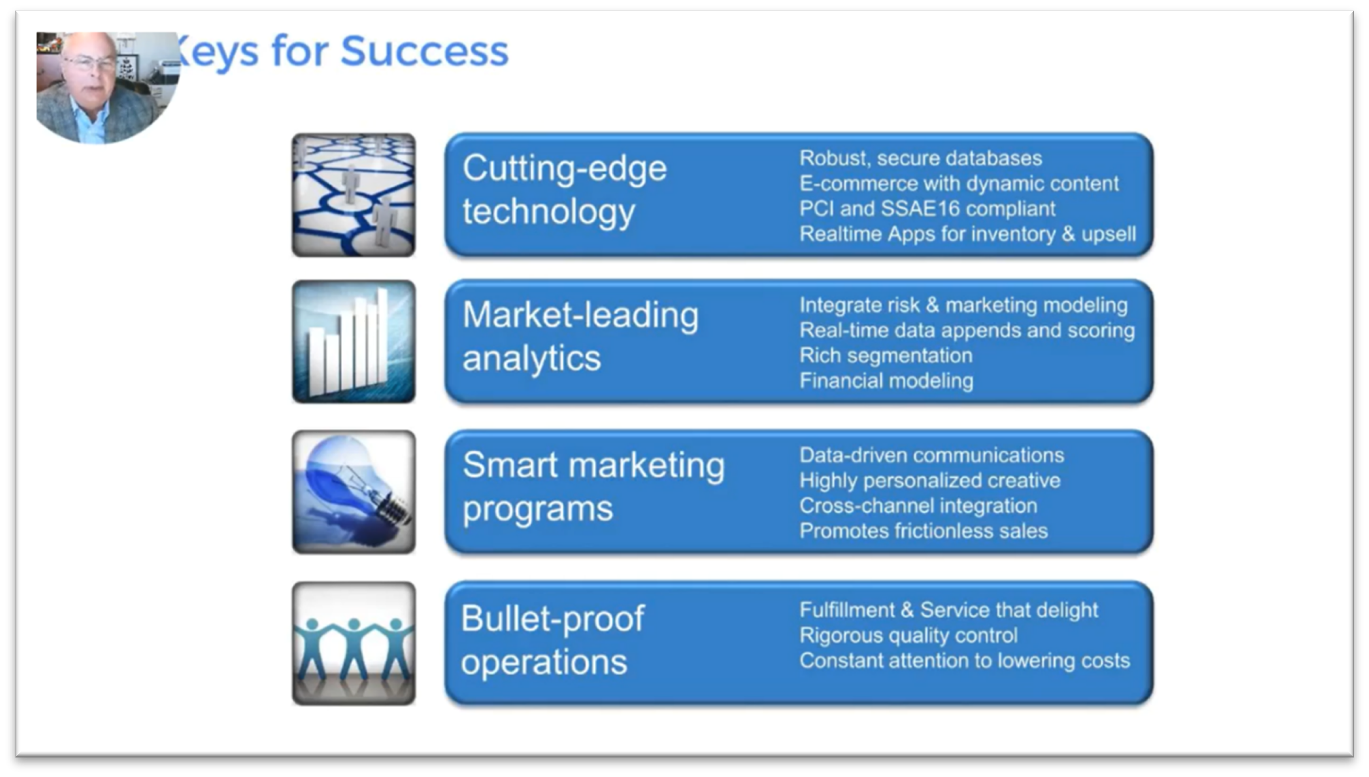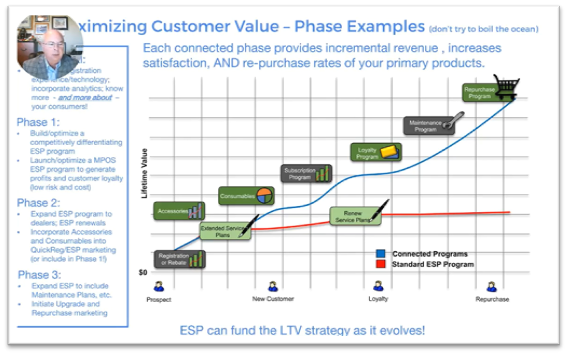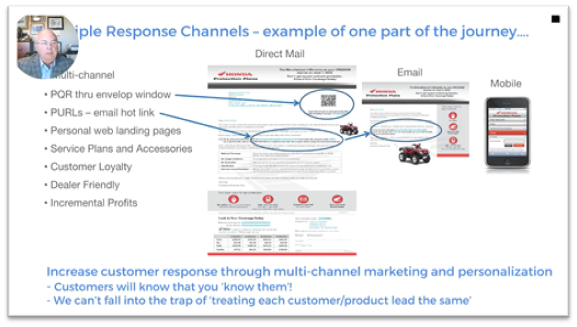Alternative Revenue Streams in a Pandemic
Webinar hosted by: Paul Swenson, EVP After, Inc.
Warranty Innovations Conference

You can listen to the webinar anytime on After, Inc.’s YouTube channel at https://youtu.be/-jq2VUxORxA
Introduction
Hey, good morning. I’m Paul Swenson with After incorporated. We’re happy to be a sponsor of this conference. Roz and team have done a great job to bring us together so we can share good ideas and thoughts, even if it is a little bit strange. During these times, it’s good to see your faces. Some of you are client partners of After, so I want you to know that we very much appreciate our ongoing partnerships. I’m a man of few words – many of you know – so let’s get right into it. Oh, my chatbot is lighting up with people who don’t agree that I’m a man of few words. I’m going cut them off – got to have a little fun!
What changes have we seen during the pandemic?
So, what’s really changed during the pandemic? What additional opportunities exist? Will they last, or have they always existed – just a little different? How can we know more about our end user customers? And how do we stay relevant and increase lifetime value and loyalty with them?
During the pandemic, we’ve seen a lot of changes. No surprise there. We’ve got new office protocols – many of our offices are still closed. Travel restrictions. We’ve got new local protocols that we’re all dealing with. Virtual meetings like this one. One of my favorite things that I hear often is when someone doesn’t turn their video on, they’ll sometimes say, “I’m just not video ready today.” I really like that one. We have found, and many companies have found, that remote offices or working from our home offices can work really well. In fact, it could be very economical and very efficient. So I think we’ll see some ongoing changes. It’s often easier to get a hold of key people, especially when we’re working from home – or those that are limited in the office. It can also work in reverse. But most often it’s easier to get to all the key people.
And then we have change on top of change. So just as soon as we think we’ve got things kind of figured out, we have more changes again, and that’s going to continue for a while. But it’s also generated new levels of creativity. I know we’re all trying to figure out “what does the new normal look like after we’re done with the pandemic, or at least get it under control?”
Social distancing has led to increases in sales in various sectors – as well as service contracts.
One thing that we’ve all seen is that U.S. people and businesses are very resilient, In spite of some of the things we’ve seen, the core of this country and the businesses here have great resiliency and are bouncing back.

I know you’ve all seen this, but while we’re facing difficult times, we’ve also seen some things happen with people and families are socially distancing. Many are spending more time together, and that’s resulted in some interesting sales trends. For example, large increases in sales in many sectors. Marine. Try and buy a boat right now. We tried. Right now, many of the boat manufacturers are just filling sold orders and they’re 2 to 3 months out. Same with power sports and ATVs. Sales have gone through the roof. RVs, trailers, recreational vehicles, pickup trucks, sporting goods, outdoor furniture, barbecue games, outdoor power equipment, gaming. All ofthose are seeing huge increases in sales and that has created some inventory shortages in many sectors at the same time.
One of the topics that has been discussed this morning is service contracts. Attach rates have increased both at the point of sale and missed point of sale. Consumers are buying and they’re protecting their products. We saw the same thing, by the way, in the so-called great recession. Attach rates went up.
So, what do we learn from this? And how do we get smarter and better about what we’re doing?
What new opportunities have been created?
I would suggest that these opportunities have always existed, but they are more important than ever now, and we’re also seeing a difference in the way consumers purchase. We need to stay on top of those emerging trends. I’m also going to suggest that most manufacturers and retailers are not doing a very good job of keeping their customers engaged between major purchases in spite of what they might think. They lose revenue, they lower repurchase rates, and they let customers go to competitors.
Some of these are questions that we ask of each other.
- What percentage of customers buy extended service plans?
- How many consumers buy OEM parts, or did they buy aftermarket parts?
- Where do consumers purchase their aftermarket supplies?
- Are they purchasing third party accessories and consumables?
- Are they going back to the OEM?
- How many customers are at risk of buying a competitive product?
- How many and when are they in the market to repurchase?
- Are our various lifecycle programs working together toward a common goal?
- Are the lifetime value programs cohesive, timely and relevant?
- How much opportunity is really being left behind?
We forget that – especially in this environment – it is just as important to keep current customers engaged as it is to get new ones.
Let’s look at this in the simplest terms. I know we all know this, but I think reminders are important. The easiest place to get new business is where we already have business. I know we all know that, but sometimes we forget that – I know I do. And our partners, both in manufacturing and retail, spend a lot of time acquiring new customers. We spend time identifying those customers and looking at the metadata behind them. We have various programs to go out with extended service-related products, accessories, consumables and so on, all with the hope of having them repurchase a new major product. But how can we get smarter and better at this?
What makes a successful program?
I’m going distill it down into four keys for success of a good program. It is making sure we have the right technology, market-leading analytics, data-driven marketing and e-commerce platforms with a lot of dynamic content, and bullet-proof operations, compliant with the regulatory requirements.

There are differences between analytics that really have their roots in the fifties and sixties and seventies and the type of analytics that we can do today. We need to integrate them into smart marketing programs and operations. Again, we all know this, but when the customer needs us, we need to make sure that we’re fulfilling on that promise and going above and beyond, with rigorous quality control and constant attention to lowering costs while delighting the customer.
How do you maximize customer value?
Here is a kind of a simple continuum, if you will, of maximizing the customer value. If we look at the connected programs, they can provide incremental revenue, and increase that affection and loyalty that leads to more sales. So, let’s start with registration or identifying the customer. We need to make sure we’ve got a system that captures their information at the point of sale. If we don’t and we are a manufacturer, and our point of sale is through dealers, then we’ve got a different issue to solve. We have to find a way to identify those customers. Oftentimes, we start with extended service contracts, or a “thank you” subscription program, maybe a loyalty program or a maintenance program. But they’re disjointed.

There is a saying that I like and it is: “Don’t try to boil the ocean, start somewhere.”
If we look at this continuum and say, “I want to identify customers, I want to look at accessories, consumable subscription programs, loyalty programs, maintenance and all those opportunities along the way.” The very foundation of this is to make sure that we’ve got the right registration experience and technology that also incorporate analytics. At this point, if we don’t have a service contract program, we need to build one. If we have one today, how can we change it up? How can we make it different?
Many of us have been around service contracts for a while. I think back on laptops and tablets. First it was break-fix. Then we had added accidental damage. Now there’s data recovery that can protect the most valuable assets on those products, which is the data, the images, and the memories. We need to expand those service contract programs to include “missed point of sale” (MPOS) – expand them to dealers, do renewals, incorporate accessories and consumables into the marketing phases and do it in a consistent way. And at after we do that, we also take a look at the service contract program and realize that often times, the service contract program can fund the lifetime value strategy as it evolves.
Here’s one of the issues we see, too. A lot of times we hear partners or potential partners say, “hey, we’ve got several of these programs. We’re in pretty good shape.” But, when you peel the layers back, they’re not. And while some of these programs may exist, they oftentimes lack the necessary ingredients of a truly individual customer-targeted approach. And part of that is because they rely on 20th century-style registration and lead capture programs. They use rudimentary analytics. There’s a lack of a cohesive strategy that’s constantly tested and improved, and there’s no real feedback mechanism.
Typically, what will happen is that the manufacturer sends out a direct mail or email. These communications have an attach rate of X. It was better than last month, so that’s good. But it is not, because we’re looking at it at an aggregate level instead of an individual customer segment. The various customer initiatives are often siloed in a large bureaucracy. We’ll see that service contracts might be under Finance, accessories and consumables might be managed by Parts, loyalty and maintenance programs might be managed by Marketing, and those silos oftentimes don’t talk to one another. They’re running individual programs rather than a cohesive approach. That’s where we see a lot of opportunities.
If you look at the foundation of this, it’s the right technology where we can learn more about the customer, identify who they are and immediately apply analytics. The second that customer is identified, every single one of them needs to come into that registration or identification process and immediately be evaluated against the existing customer base, so that we can instantaneously household them and score them and start to put them into the most relevant strategy for that particular customer. If the customer can’t be identified in the database, then let’s immediately append external variables to that customer’s record so that we can begin the scoring process using the latest models that we’ve built. The moment they come into the system, we start to work analytics so that we can then place each customer/product lead into a prescribed journey. Then we need to use our models to re-evaluate and re-score each customer along the journey.

I’ll give you example. Let’s say I purchase a lawn tractor. And shortly thereafter, I get a direct mail solicitation suggesting that I should come in and purchase a dump wagon that goes along with that lawn tractor. And let’s say I choose to purchase that over the web and I have it shipped to me – which happens all the time now. That should change my journey on the customer continuum, so that the next solicitation that I get – because I purchased through the web – should be email with a hot link and a personal URL. Not the more expensive direct marketing. And if I don’t respond to that, then we can come back to direct mail. But we need to do that on the fly. We can’t fall into the trap of treating every customer lead the same way because we miss a lot of opportunity that way. This is just one example of part of the journey.
Let’s say a service contract marketing program needs to be multi-channel. We could do things like put a QR code that shows up through the envelope window so the customer doesn’t even need to open the envelope. They put their phone up against it. Boom! That pops them right into the mobile application so that they can make a purchase. You can use the QR code in a direct marketing letter and a personal URL in an email. Both take them directly to their own personal landing page, showing them the product that they purchased – not just a general product, but the exact one that they purchased. Customers will know that we know them – and when they do, they’re more apt to buy.
Connecting programs will strengthen each other.
We all know this, but we often fall into the trap of having disconnected communications with customers or using a shotgun approach as opposed to a real targeted approach. If we can systematically connect these programs together, they strengthen one another. Service contract programs, accessories, consumables, maintenance repurchase programs. There’s a powerful synergistic impact from each of those together and they build off one another. We all know that customers who purchased service contracts are more likely to purchase accessories and consumables, and vice versa. So, let’s build on these in a way that really helps the customer experience. Because at the end of the day, that’s what it’s all about. It is making sure that customers have great experiences, and they enjoy the products that they purchased. They find enjoyment by having accessories and by keeping their product maintained properly so it runs and operates well. Then they are more likely to come back and upgrade.
I want to thank everyone and invite you to come into our booth of the conference. I hope you and your families all stay well. These are crazy times. We’ve known several people, including in our company, that have had the coronavirus and its tough stuff.
Keep calm and carry on – and let’s make good things happen.
To learn more about After, Inc. solutions, please visit www.afterinc.com.





